Kayi Holige is a classic and traditional South Indian sweet prepared using flour, jaggery (brown sugar), and coconut. This filling differs from other puran poli and is served during festivals like Ugadi, Sankranti (Pongal), Ganesh Chaturthi, Diwali, and Ram Navami.
Check out more interesting coconut sweets and desserts.
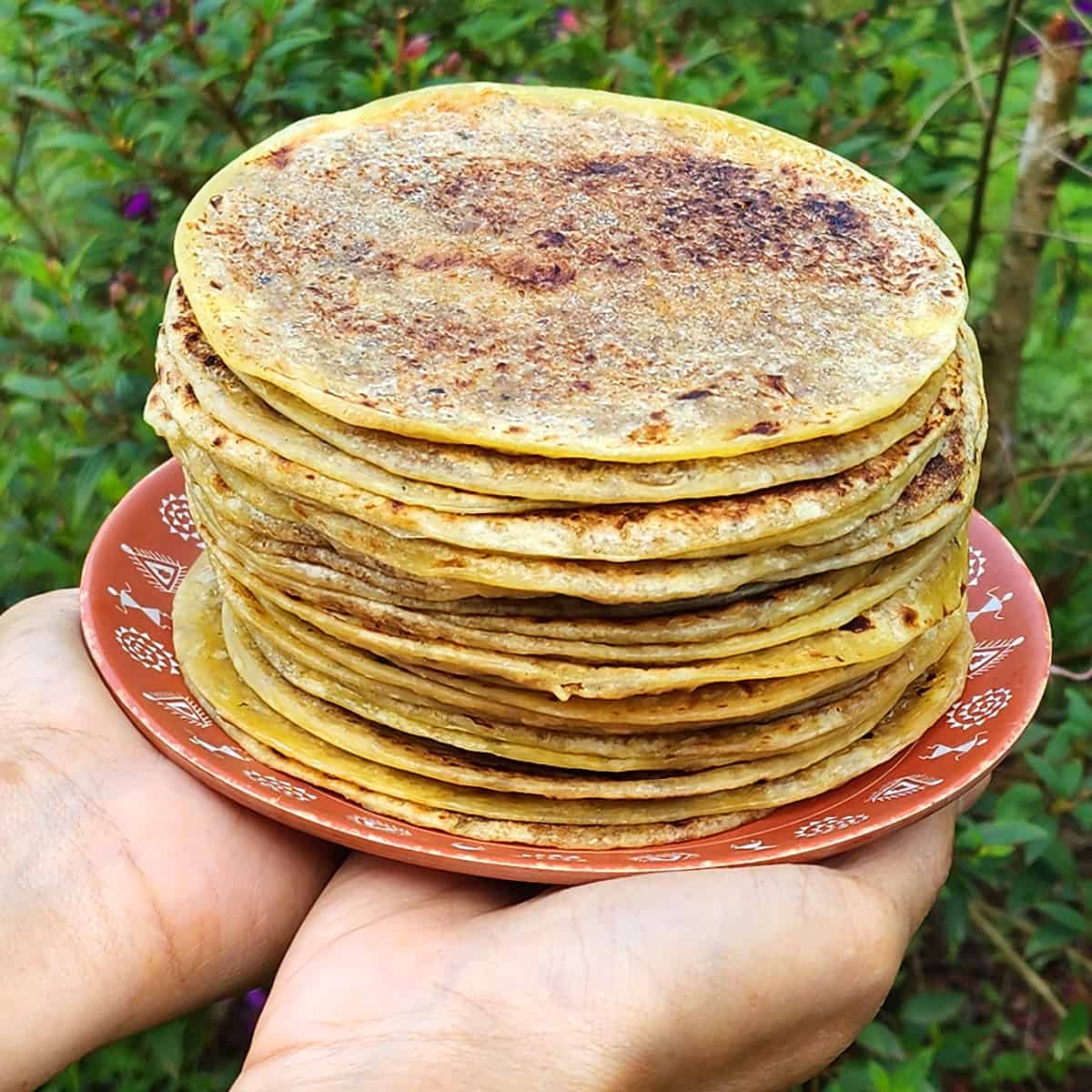
Jump to:
Recipe card
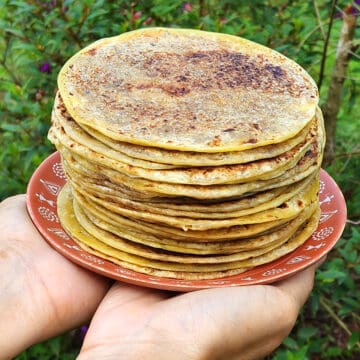
Kayi Holige Recipe | Coconut Sweet Bread | Thengai Poli
Equipment
- Tava or skillet
Ingredients
For kayi holige dough (kanika)
- 1 1 /2 cups All purpose flour
- ¼ teaspoon Turmeric powder or a pinch
- ¼ teaspoon Salt or a pinch
- 4 tablespoon Vegetable oil or Sesame oil divided
- Water for kneading approx ¼ cup
For hoorna or puran
- 1 cup Jaggery Brown sugar
- 2 cups Grated coconut
- ½ Cardamom powder
Other ingredients
- Oil or ghee for cooking holige
Instructions
Prepare the dough (kanika)
- In a bowl, add all-purpose flour, turmeric powder, and salt to taste. Now add water little by little and form a slightly sticky dough.1 1 /2 cups All purpose flour, ¼ teaspoon Turmeric powder or a pinch, ¼ teaspoon Salt, Water for kneading
- Continue to knead to form a soft dough. Add 2 tablespoon of oil and knead for a minute.4 tablespoon Vegetable oil or Sesame oil
- Now, pour the remaining 2 tablespoon of oil into the dough. Cover and let the dough soak in oil for 30 minutes.
Prepare the hoorna (filling)
- Grind the grated coconut in a mixie jar. Do not add any water while grinding. This is just to make rolling easy.2 cups Grated coconut
- In a pan, add jaggery with ¼ cup of water and keep stirring on a medium flame until jaggery dissolves and starts to thicken.1 cup Jaggery
- To this, add ground coconut and cardamom powder and mix well. Cook until the water content evaporates. You should be able to make balls out of this mixture. Do not make the mixture dry or soggy.½ Cardamom powder
How to roll kayi holige?
- Pinch a small piece of dough. Place this in a greased banana leaf (parchment paper or wax paper) and flatten it with your palms to form a circle.
- Add a tablespoon of coconut jaggery filling at the center, pull the sides, and seal the edges.
- Press this gently with your fingers in an outward direction till you can make it to a thin circle without the filling coming out.
- Repeat the process for the remaining dough.
How to cook coconut sweet bread (poli)?
- Heat a non-stick pan on medium flame. Transfer the rolled holige onto the pan and cook on both sides till you can see some golden caramel spots. Apply oil or ghee while cooking if needed.Oil or ghee for cooking holige
- Serve immediately or store it in an airtight container. This will remain fresh for at least 7 days.
- Traditionally, they are served with ghee or brown butter, but they taste excellent on their own as well. You can also try it with aamras.
Notes
- You must knead the dough for at least 12 to 15 minutes to get that soft dough consistency.
- The dough should be shiny and elastic once it is soaked for 45 minutes. That is, when you stretch the dough, it should not tear.
- Use fresh coconut for the best flavors. If unavailable, you can use frozen or dry coconut flakes.
- If you cook the filling for a long time, especially the jaggery and water, then it will become rock-hard. So, to fix these, you can add a little water and heat it again. If it gets soggy for some reason, then cook until water evaporates, or add some rice flour to absorb moisture.
- You can even use a rolling pin instead of hands.
- Use coconut oil while cooking for the vegan version and ghee for village-style holige.
- I have shared pictures from 2016 and 2024. (In 2016, I made it with brown sugar and dry coconut from Payless, added more turmeric, and cooked it dry. This time, in 2024, I have used fresh coconut, reduced turmeric, and applied oil while cooking).
Nutrition
Coconut Sweet Bread
Coconut sweet bread is vegan with crispy caramelized edges and melt-in-mouth filling. The use of jaggery with fresh coconut adds an aromatic flavor and texture to the flatbread.
Kayi means coconut, and holige means sweet bread in English. This coconut sweet bread is also called coconut obbattu or kayi obbattu in some parts of karnataka, nariyal poli in North India, thengai poli in Andhra and Tamil Nadu, and narla ubbati in Mangalore Konkani cuisine.
It is mainly prepared during festivals like Navratri, Makar Sankranti (Pongal), Holi, Ganesh Chaturthi, and Ugadi and served as an after-meal dessert drizzled with ghee.
Every region has its own variation, and today's post is all about Mangalore-style kayi holige. Making the dough and stuffing is easy, but combing the two and rolling it is a little work that you will have to do. I did not succeed when I did it the first time, and making it round and thin is challenging for a beginner. It becomes perfect with practice.
Get the full recipe here if you are looking for traditional holige or ubbati, also called dal roti or puran poli.
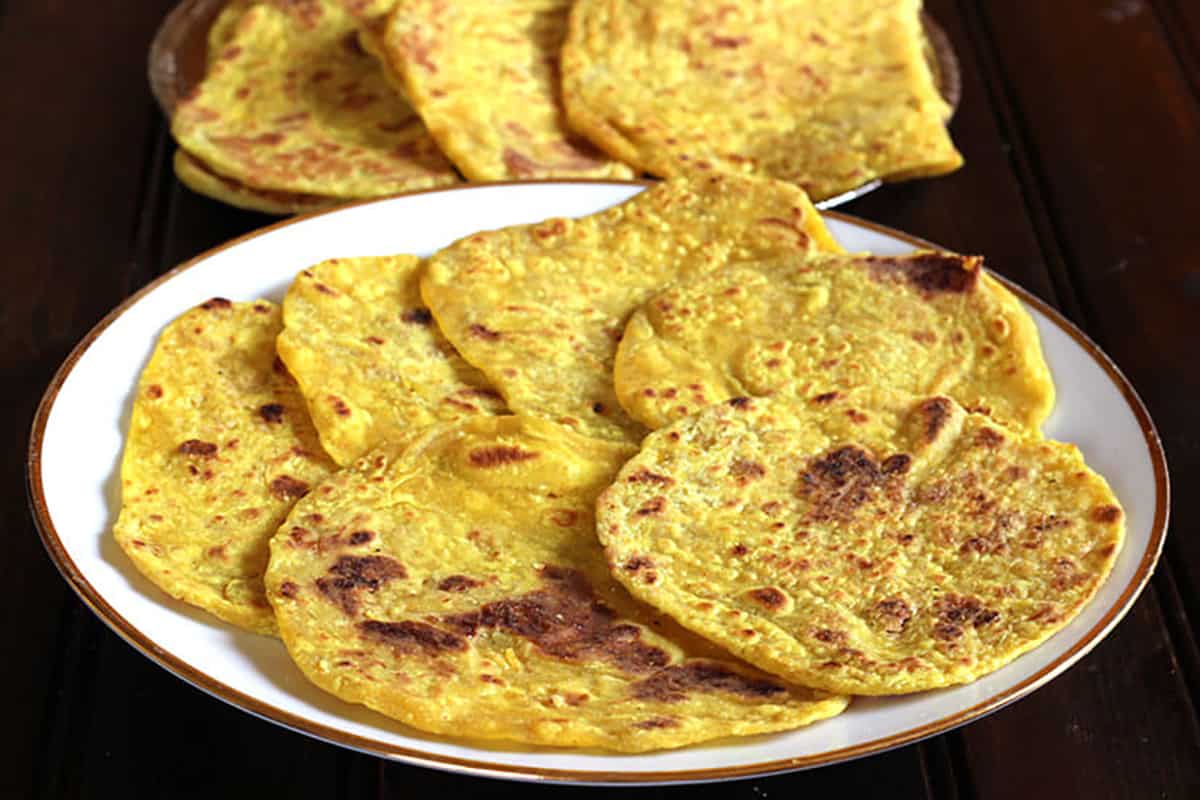
Ingredients
For the dough or outer cover: Use all-purpose flour, turmeric powder, a pinch of salt, oil, and water for kneading. You can even make it with wheat flour (atta) if desired.
For the filling: Use jaggery, coconut, and cardamom powder. You can use brown sugar instead of jaggery.
Step-by-step instructions
Prepare the dough (kanika)
- In a bowl, add all-purpose flour, turmeric powder, and salt to taste. Now add water little by little and form a slightly sticky dough.
- Continue to knead to form a soft dough. Add 2 tablespoon of oil and knead for a minute.
- Now, pour the remaining 2 tablespoon of oil into the dough. Cover and let the dough soak in oil for 30 minutes.
Prepare the hoorna (filling)
- Grind the grated coconut in a mixie jar. Do not add any water while grinding. This is just to make rolling easy.
- In a pan, add jaggery with ¼ cup of water and keep stirring on a medium flame until jaggery dissolves and starts to thicken.
- To this, add ground coconut and cardamom powder and mix well. Cook until the water content evaporates. You should be able to make balls out of this mixture. Do not make the mixture dry or soggy.
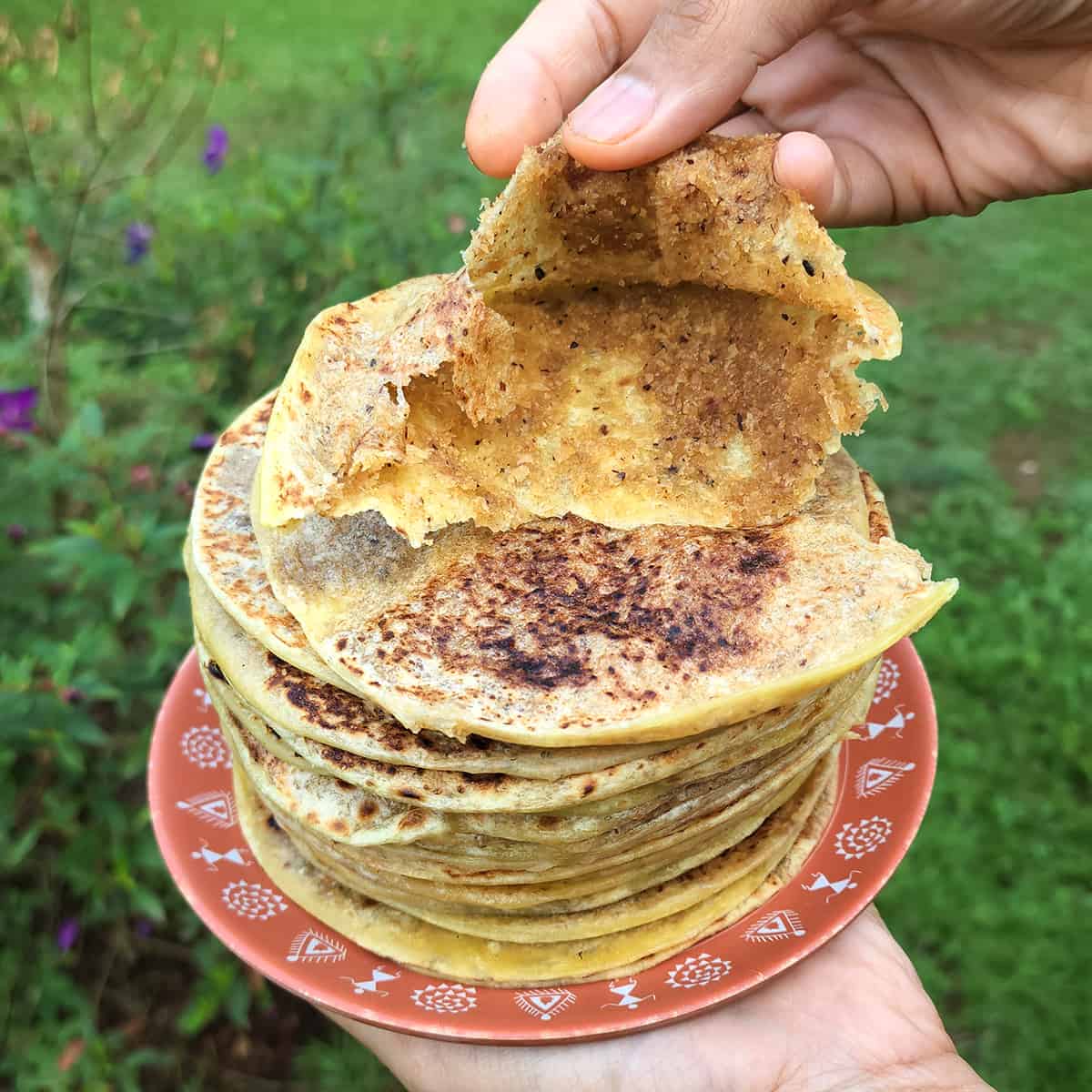
How to roll kayi holige?
- Pinch a small piece of dough. Place this in a greased banana leaf (parchment paper or wax paper) and flatten it with your palms to form a circle.
- Add a tablespoon of coconut jaggery filling at the center, pull the sides, and seal the edges.
- Press this gently with your fingers in an outward direction till you can make it to a thin circle without the filling coming out.
- Repeat the process for the remaining dough.
How to cook coconut sweet bread (poli)?
- Heat a non-stick pan on medium flame. Transfer the rolled holige onto the pan and cook on both sides till you can see some golden caramel spots. Apply oil or ghee while cooking if needed.
- Serve immediately or store it in an airtight container. This will remain fresh for at least 7 days.
- Traditionally, they are served with ghee or brown butter, but they taste excellent on their own as well. You can also try it with aamras.
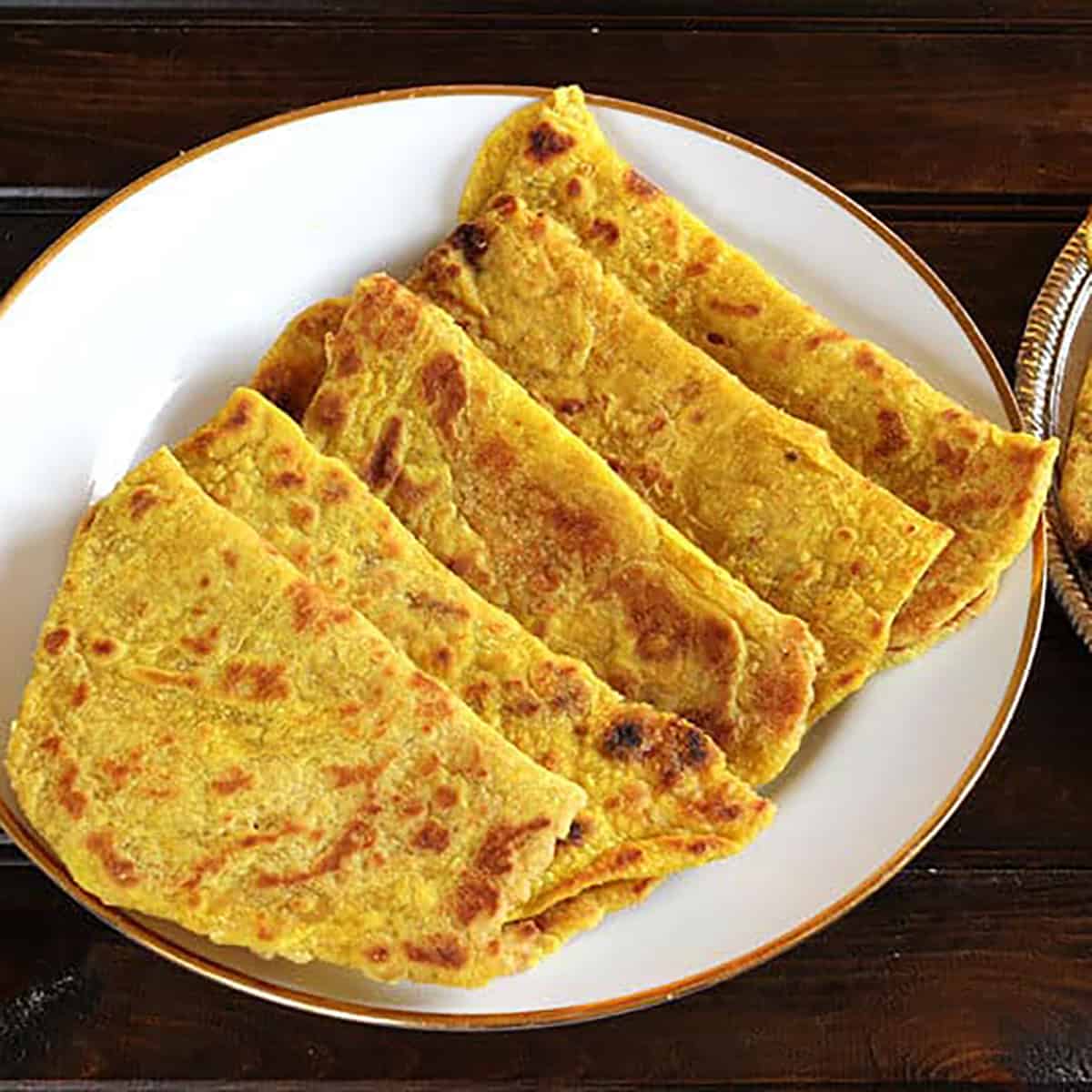
Pro Tips
- You must knead the dough for at least 12 to 15 minutes to get that soft dough consistency.
- The dough should be shiny and elastic once it is soaked for 45 minutes. That is, when you stretch the dough, it should not tear.
- Use fresh coconut for the best flavors. If unavailable, you can use frozen or dry coconut flakes.
- If you cook the filling for a long time, especially the jaggery and water, then it will become rock-hard. So, to fix these, you can add a little water and heat it again. If it gets soggy for some reason, then cook until water evaporates, or add some rice flour to absorb moisture.
- You can even use a rolling pin instead of hands.
- Use coconut oil while cooking for the vegan version and ghee for village-style holige.
- I have shared pictures from 2016 and 2024. (In 2016, I made it with brown sugar and dry coconut from Payless, added more turmeric, and cooked it dry. This time, in 2024, I have used fresh coconut, reduced turmeric, and applied oil while cooking).
More coconut and jaggery-based sweets
Coconut and jaggery-based sweets are very popular in Mangalore and Udupi cuisine and are prepared during all festivals and celebrations.
Note: We originally posted this vegan kayi holige recipe Mangalorean in Aug 2016. It has now been modified in Jan 2024 with Expert Chef Tips, FAQs, Storage Instructions, etc.

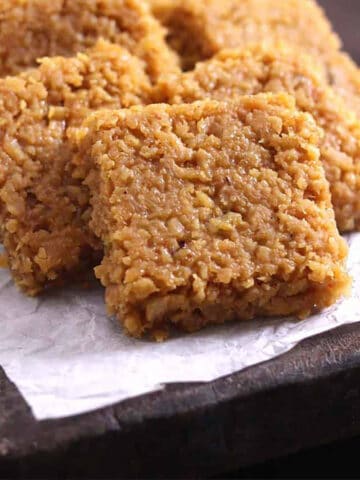
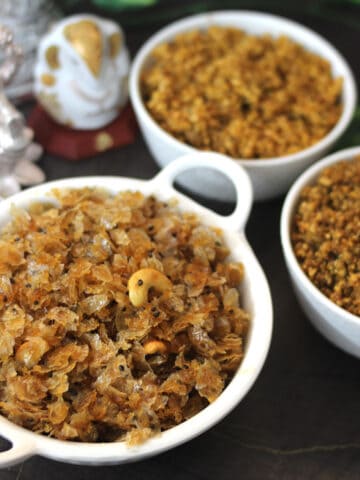
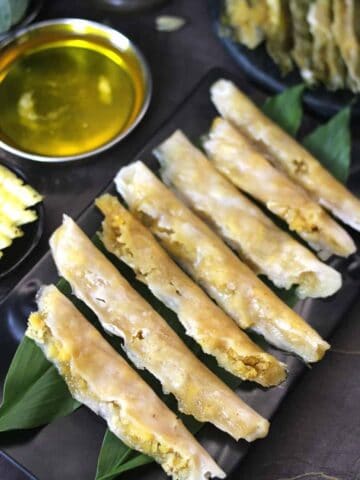
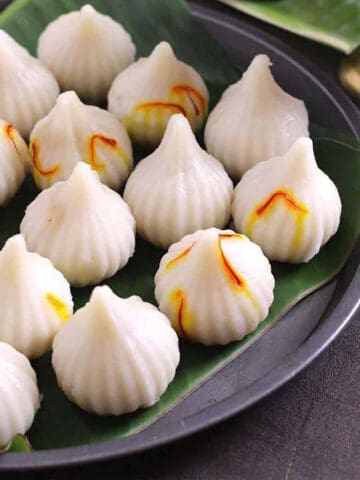
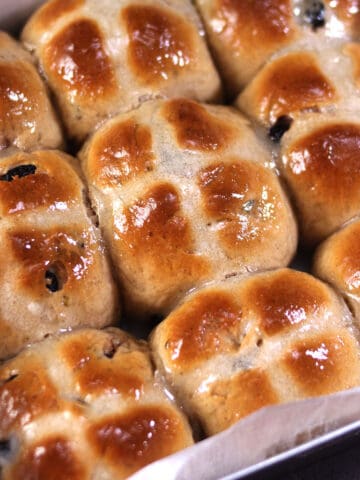
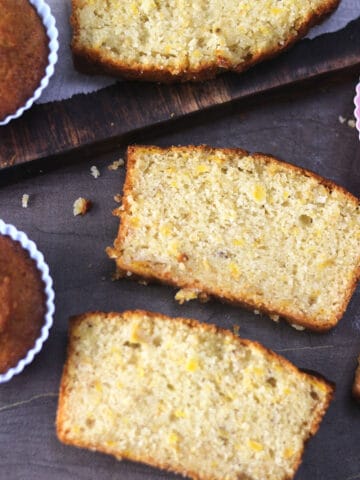
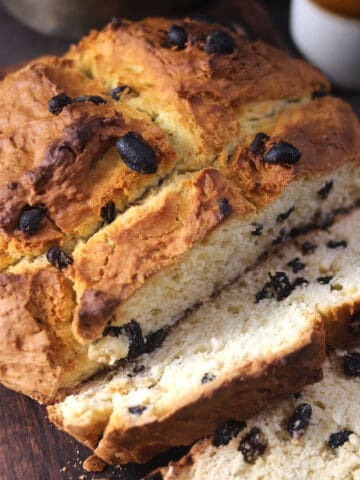
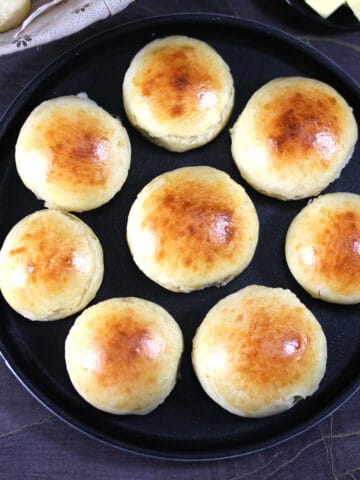
Veena Theagarajan
looks yum! you are tempting too much
Kushi
Thank you Veena 🙂